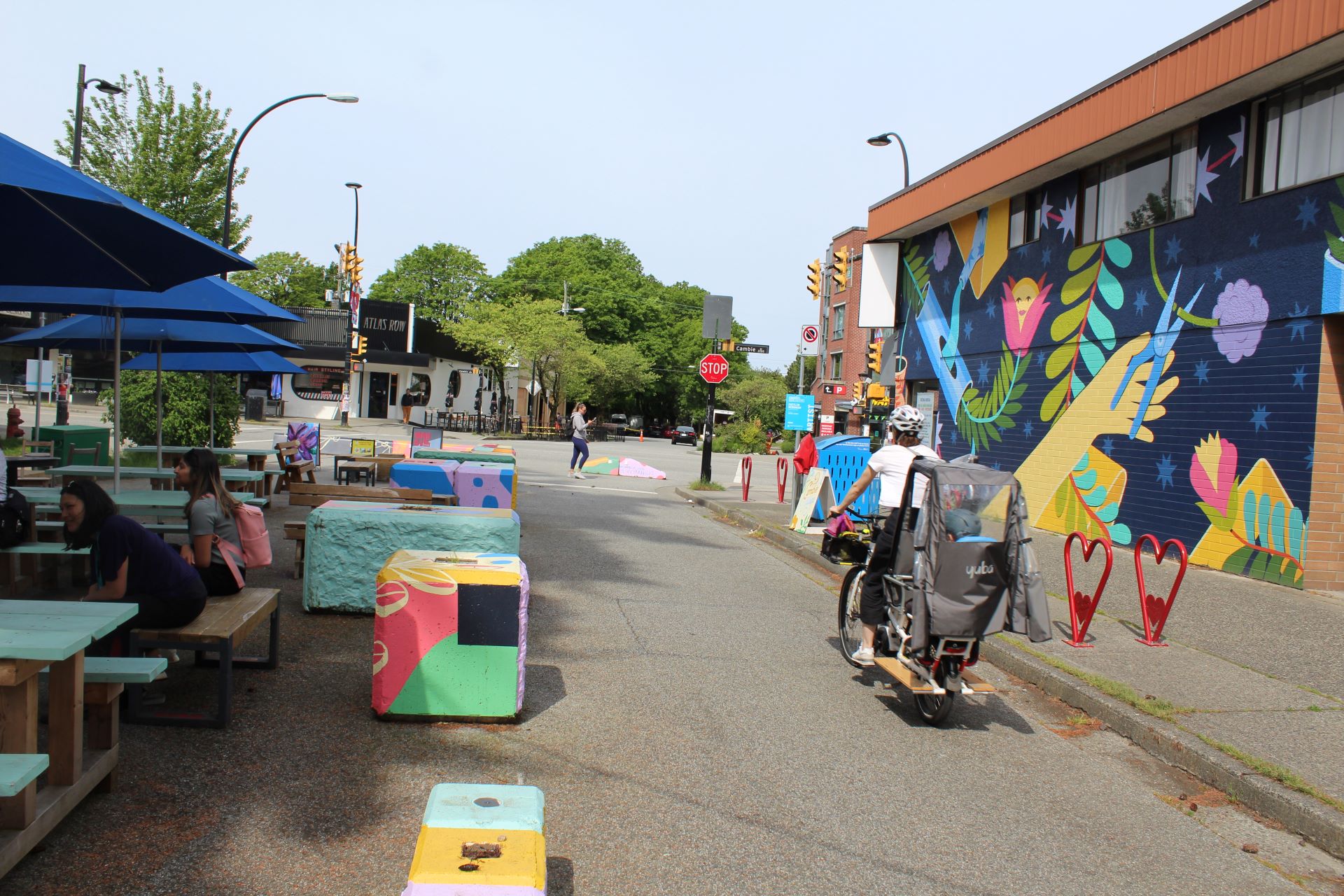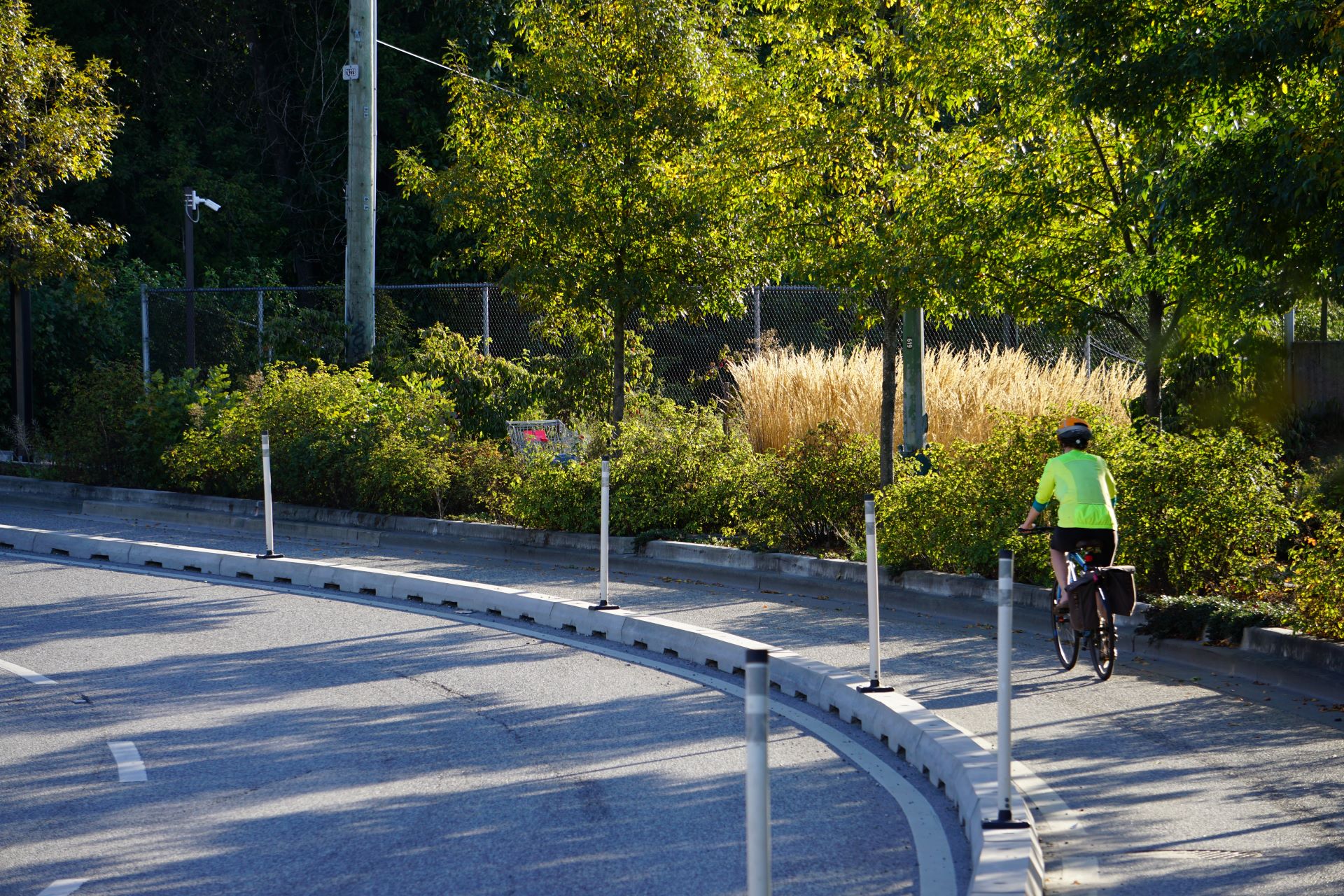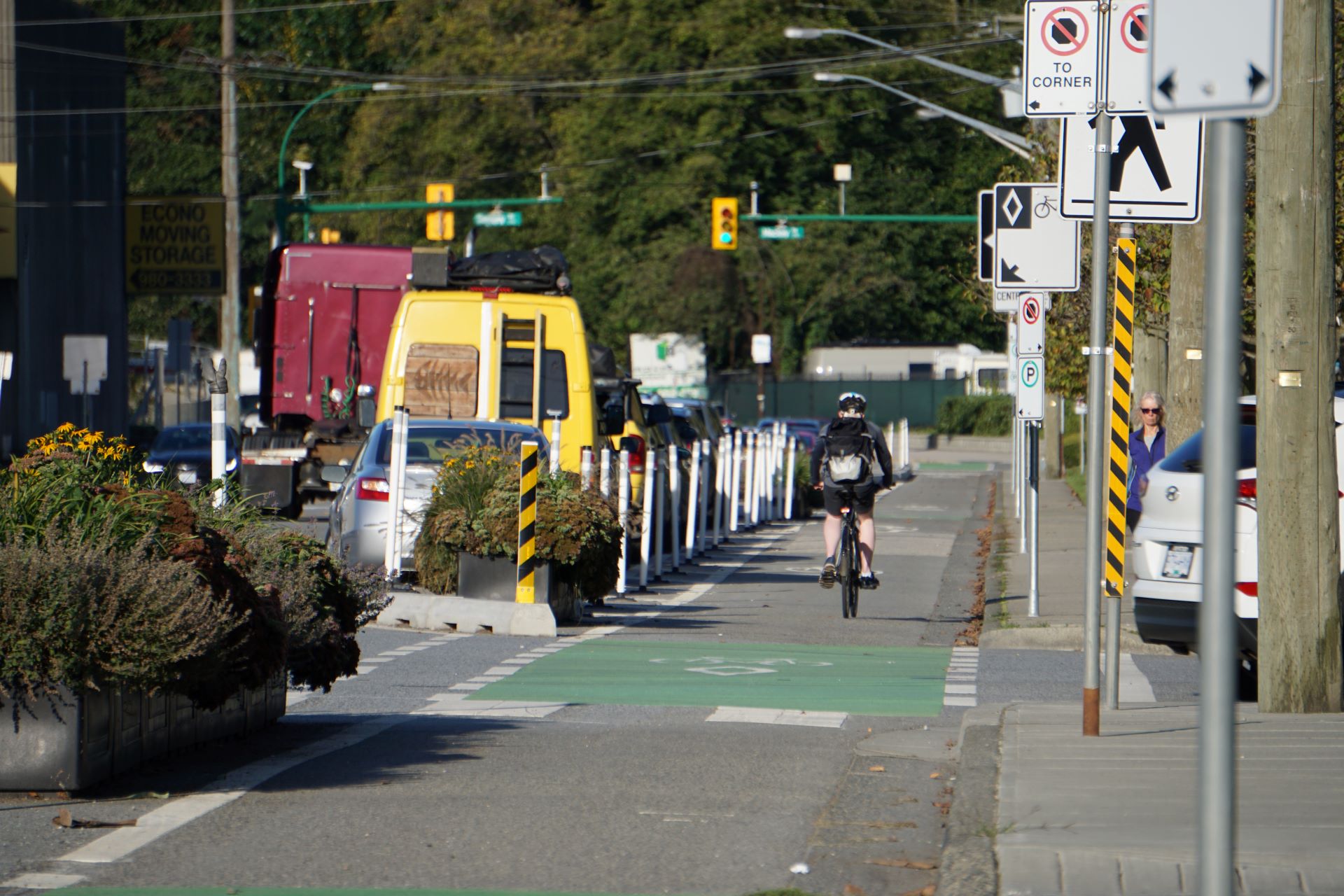Quick build bikeways are key to our transportation future – here’s how we can make it happen
Quick build bikeways are key to our transportation future – here’s how we can make it happen

TransLink is helping municipalities get safe and comfortable bike infrastructure up and running – fast!
What’s happening? TransLink has released a Rapid Implementation Design Guide for Bikeways in Metro Vancouver. This guide is the first of its kind and has the potential to support game changing improvements in active transportation. Aimed at local governments and other road authorities, the design guide lays out all the steps – from planning, to design, to implementation and beyond – to put low-cost protected bike infrastructure in place fast.
Why it matters:
- For most people, the biggest barrier to cycling is a lack of access to safe places to bike. Traffic separation is one of the biggest tools we have to promote safe biking and rolling.
- According to TransLink and HUB Cycling’s State of Cycling report, less than half the infrastructure in Metro Vancouver is rated as “comfortable for most” – with only 132 kilometres falling into the categories of dedicated bike infrastructure.
- Conventional traffic-separated bike lanes are great, but they can be slow to complete (around four years) and expensive to build ($3 million per kilometre!).

What is it: Rapid implementation bikeways are fast to deploy, low-cost, and flexible!
Cities all around the world – from Seville to Sydney – and in our region have been experimenting with “quick build” or “pop-up” bike infrastructure. The pandemic especially put a rush on these kinds of projects, as cities needed to quickly provide extra space for people to commute or recreate by biking or rolling.
The Rapid Implementation Design Guide for Bikeways in Metro Vancouver builds on these and other experiences, putting together best practices to learn from. The report provides guidance for the planning, design, implementation, maintenance, and monitoring of bikeways, through a rapid implementation lens.
Rapid implementation bikeways would typically be realized by reallocating road space from other uses (like parking or traffic). They rely on flexible low-cost materials like planters, delineator posts, cement blocks, or other materials versus heavily-engineered concrete or bigger infrastructure changes. These are important traits because it means city crews can easily install and maintain the infrastructure, which has the added bonus of being able to contribute to placemaking, by integrating public art or neighbourhood beautification (think planters).
The use of these materials are key to speed of deployment and flexibility. What’s more, they provide a relatively high degree of traffic separation and can set the stage for permanent installation down the road.
From deployment in days, weeks, or months at a potential cost of $300,000 per kilometre or less, rapid implementation bikeways offer major advantages. With traditional bikeways potentially taking years to implement at $3 million per kilometre, the benefits of rapid implementation are clear.

The context:
- Transport 2050 lays out a long-term vision of an 850-kilometre “Major Bikeway Network” (MBN) for Metro Vancouver. Traffic-separated and “comfortable for most”, the network would connect urban centres across the region.
- With approximately 210 kilometres of this Major Bikeway Network already complete, the Mayors’ Council recently set out priorities for the next ten years, including completing 450 kilometres of the MBN and bikeway networks in all Urban Centres across the region.
- Did you know TransLink funds regional transportation? In 2022, we invested $130 million in upgrades to walking, biking, rolling and roads projects – including $36 into active transportation infrastructure.
- Through our Bicycle Infrastructure Cost Share program (BICCS), we cost-share active transportation improvements with local governments. Given the climate emergency and affordability crises – we want to get infrastructure up and running fast. Now we’re prioritizing projects that can be rapidly deployed, AKA highly cost-effective and deployed inside two years (and hopefully sooner!).
The big picture: imagine a region where biking and rolling is safe, comfortable, and connected for most people, complementing world class transit and accessible, walkable cities. That’s the kind of future we all want. Rapid implementation bikeways could be coming to a neighbourhood near you! These installations could become part of the Major Bikeway Network or an Urban Centre near you, helping us complete an awesome regional system of traffic-protected bike lanes.
Learn more: download the design guide.






You need to be familiar with every bus route in order to find the problems. TransLink wasted about $1 million on an ineffective plan to balance bus stops.